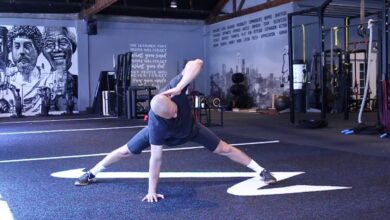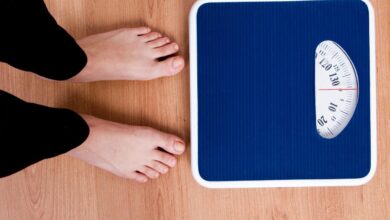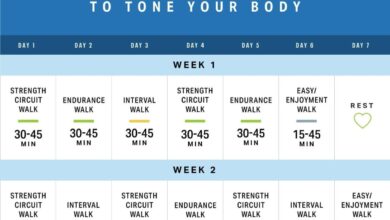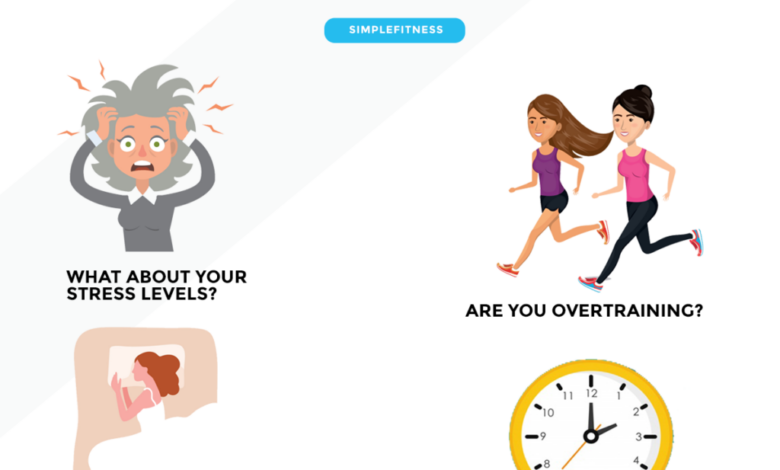
7 Tips to Conquer a Weight Loss Plateau with MyFitnessPal
7 Tips to Conquer a Weight Loss Plateau with MyFitnessPal – hitting a weight loss plateau can be frustrating. You’re putting in the work, eating right, and exercising consistently, yet the scale refuses to budge. It’s like your body has hit the pause button on your progress.
But don’t despair! Plateaus are a normal part of the weight loss journey, and with the right strategies, you can break through them and continue your path to your goals. MyFitnessPal can be a powerful tool in this process, providing insights into your calorie intake and expenditure and helping you make adjustments to your plan.
In this blog post, we’ll explore seven key strategies to help you conquer those stubborn plateaus, using MyFitnessPal as your guide. We’ll delve into the reasons why plateaus happen, how to optimize your diet and exercise routine, and the importance of managing stress and sleep.
We’ll also discuss when it’s best to seek professional guidance. Ready to get back on track? Let’s dive in!
Understanding Weight Loss Plateaus
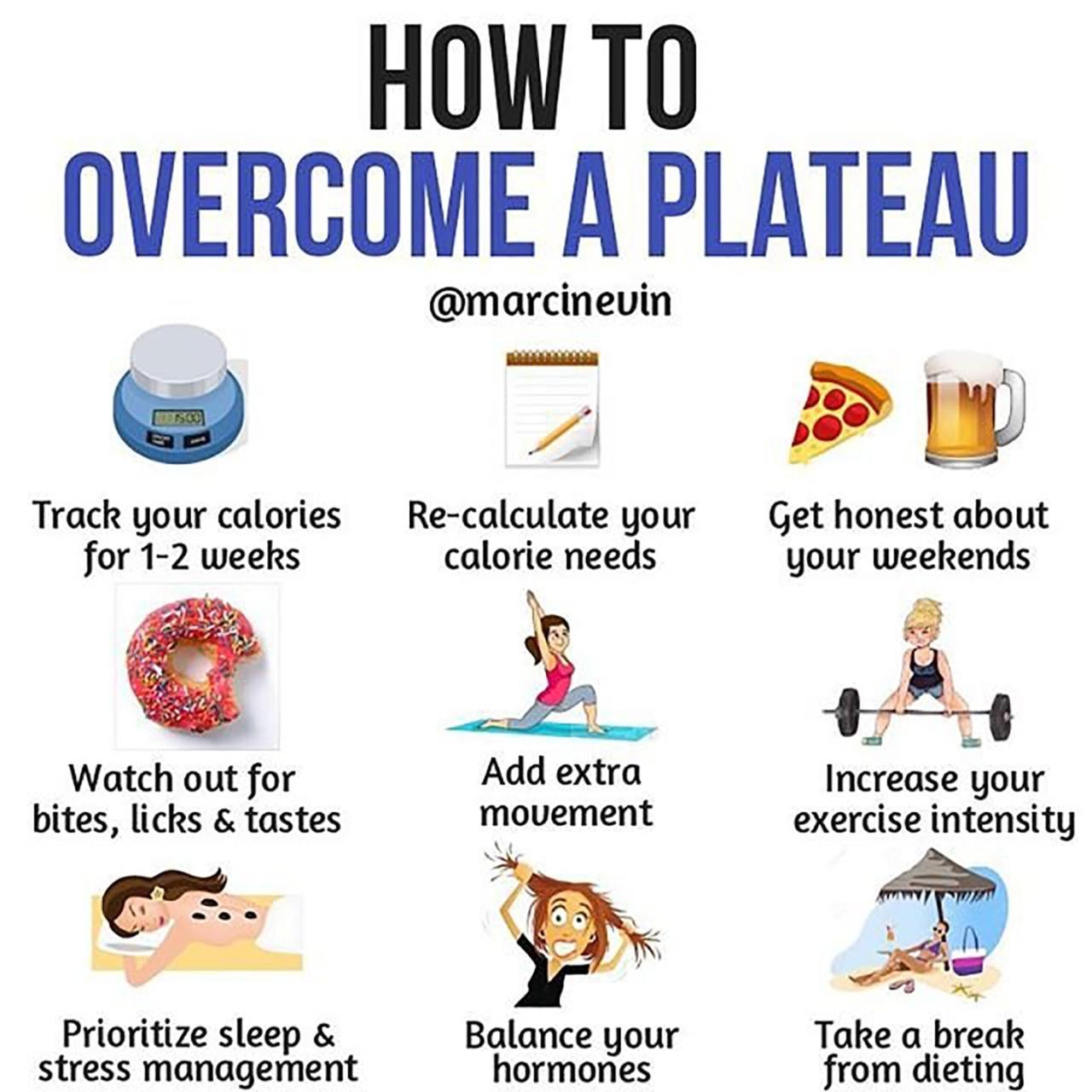
Hitting a weight loss plateau is a common experience for many people trying to shed pounds. It’s frustrating to see the scale stubbornly refusing to budge despite your best efforts. But don’t despair! Plateaus are a natural part of the weight loss journey, and they often signal that your body is adapting to your new lifestyle.
Reasons for Weight Loss Plateaus
Plateaus occur because your body is becoming more efficient at using calories. As you lose weight, your metabolism slows down, and you burn fewer calories at rest. This is a normal physiological response to weight loss, designed to conserve energy and prevent your body from depleting its reserves.
Physiological Changes Contributing to Plateaus
Several physiological changes occur during weight loss that can contribute to plateaus:
- Decreased Muscle Mass:Losing weight can sometimes lead to a loss of muscle mass, which can further decrease your metabolic rate.
- Hormonal Changes:Hormones like leptin and ghrelin play a role in regulating hunger and metabolism. When you lose weight, these hormones can shift, potentially making you feel hungrier and impacting your metabolic rate.
- Reduced Energy Expenditure:As you lose weight, your body requires fewer calories to maintain its functions. This means you may be burning fewer calories at rest and during exercise, contributing to a slower rate of weight loss.
Identifying a Weight Loss Plateau
Identifying a weight loss plateau is relatively straightforward. If you’ve been consistently following your diet and exercise plan for several weeks but haven’t seen any significant weight loss, you’ve likely hit a plateau. Here are some practical tips:
- Track Your Weight Regularly:Weigh yourself at the same time each day, using a reliable scale, to monitor your progress and identify any periods of stagnation.
- Monitor Your Calorie Intake:Ensure you’re accurately tracking your calorie intake using a tool like MyFitnessPal. Any significant changes in your diet could be contributing to the plateau.
- Observe Your Energy Levels:If you’re consistently feeling more tired or less energetic than usual, it could be a sign that your body is adapting to your weight loss and requiring more calories.
Leveraging MyFitnessPal for Plateau Breakthrough
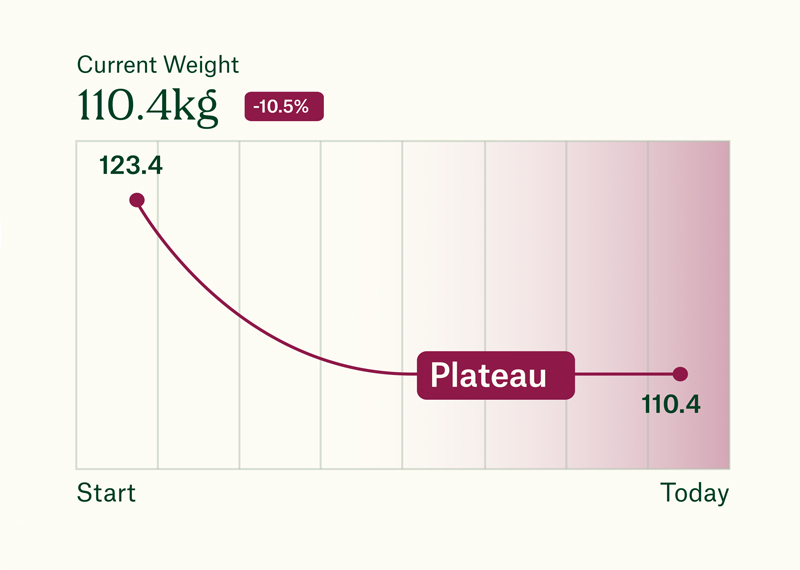
It’s frustrating to hit a weight loss plateau, but MyFitnessPal can be a powerful tool to help you break through. This platform allows you to track your calorie intake and expenditure, identify potential dietary patterns that might be hindering your progress, and make informed adjustments to your calorie goals.
Tracking Calorie Intake and Expenditure
MyFitnessPal excels at tracking your daily calorie intake and expenditure, providing valuable insights into your energy balance. By logging your meals and exercise, you can see whether you’re consuming more or fewer calories than you’re burning. This information is crucial during a plateau because it helps you understand if you’re consistently eating within your calorie deficit or if your calorie needs have changed.
Adjusting Calorie Goals Based on Plateau Symptoms, 7 tips to conquer a weight loss plateau with myfitnesspal
If you’ve been consistently tracking your calories and haven’t seen progress, it might be time to adjust your calorie goals. MyFitnessPal makes this process straightforward:
- Review your activity levels:If you’ve increased your exercise intensity or frequency, your calorie needs may have risen. You can update your activity level within MyFitnessPal to recalculate your calorie goals.
- Consider your weight loss rate:A healthy and sustainable weight loss rate is typically 1-2 pounds per week. If you’ve been losing weight at a slower rate or have plateaued, consider reducing your calorie intake slightly. A decrease of 100-200 calories per day can be enough to jumpstart your progress.
Hitting a weight loss plateau is frustrating, but it’s a common part of the journey. MyFitnessPal can be a powerful tool for overcoming this, especially when combined with mindful eating strategies. If you’re looking for a simple yet effective way to track your portions, check out things to know about the plate diet , a method that emphasizes balanced meals.
With a bit of planning and MyFitnessPal’s guidance, you can break through your plateau and keep moving towards your goals.
- Experiment with different calorie ranges:If you’re unsure about the ideal calorie intake, try experimenting with different ranges for a week or two to see how your body responds. For instance, you can try lowering your calorie goal by 200 calories per day for a week and observe if you experience any weight loss.
If not, you can increase it back to your previous goal or try a different range.
Identifying Dietary Patterns
MyFitnessPal’s food logging features can be incredibly helpful in identifying dietary patterns that might be hindering your weight loss. Here’s how to leverage them:
- Analyze your food diary:Regularly review your food logs to identify any recurring patterns or habits. For example, are you consistently consuming large amounts of processed foods, sugary drinks, or unhealthy fats? These could be contributing to your plateau.
- Track macronutrients:MyFitnessPal allows you to track your macronutrients (proteins, carbohydrates, and fats). By analyzing the distribution of these nutrients in your diet, you can identify potential imbalances. For example, if you’re consuming too many carbohydrates and not enough protein, it could be affecting your metabolism and satiety.
- Look for hidden calories:Pay attention to hidden calories in condiments, sauces, and beverages. Even seemingly small amounts can add up significantly over time.
Optimizing Diet for Plateau Busting
Hitting a weight loss plateau can be frustrating, but it’s often a sign that your body has adapted to your current routine. One of the most effective ways to break through this plateau is by optimizing your diet. By focusing on nutrient-dense foods, you can support your metabolism, increase satiety, and create a calorie deficit that leads to continued weight loss.
Hitting a weight loss plateau can be frustrating, but don’t give up! MyFitnessPal can be a great tool to help you break through. One tip is to focus on nutrient-dense meals that keep you feeling full and satisfied. A great example is this 250 calorie chicken cauliflower fried rice recipe , which packs in protein and veggies for a satisfying and healthy meal.
By using MyFitnessPal to track your calories and macros, you can ensure you’re getting the right nutrients while staying within your daily goals, which is crucial for conquering that plateau.
Sample Meal Plan for Nutrient-Dense Foods
A sample meal plan should prioritize nutrient-dense foods that provide essential vitamins, minerals, and fiber while keeping calories in check.
Hitting a weight loss plateau? Don’t despair! MyFitnessPal can be your secret weapon to breaking through. From adjusting your calorie intake to incorporating more protein, there are tons of strategies to get you back on track. And remember, staying active is key.
If you’re new to exercise, check out a beginners guide to joint health to ensure you’re doing it safely and effectively. With a little patience and the right tools, you’ll be crushing your weight loss goals in no time!
- Breakfast:Oatmeal with berries and nuts. Oatmeal is a great source of fiber, which helps you feel full and can help regulate blood sugar levels. Berries are packed with antioxidants, and nuts provide healthy fats and protein.
- Lunch:Grilled chicken salad with mixed greens, avocado, and a light vinaigrette. Chicken is a lean protein source, while avocado provides healthy fats and fiber. The mixed greens add fiber and vitamins.
- Dinner:Salmon with roasted vegetables. Salmon is rich in omega-3 fatty acids, which have been linked to weight loss. Roasted vegetables are low in calories and high in fiber.
- Snacks:Greek yogurt with fruit, a handful of almonds, or a hard-boiled egg. Greek yogurt is a good source of protein and calcium, while almonds provide healthy fats and protein. Hard-boiled eggs are a great source of protein and can help you feel full.
Incorporating Protein, Fiber, and Healthy Fats
- Protein:Protein helps build and repair muscle tissue, which boosts your metabolism. It also keeps you feeling full for longer, helping you avoid overeating.
- Fiber:Fiber is essential for digestion and can help you feel full. It also slows down the absorption of sugar into your bloodstream, which can help regulate blood sugar levels.
- Healthy Fats:Healthy fats, like those found in avocados, nuts, and seeds, can help you feel full and satisfied. They can also help regulate hormones that affect appetite.
Adjusting Macronutrient Ratios
Adjusting the ratio of protein, carbohydrates, and fats in your diet can also help break through a plateau. This involves:
- Increasing Protein Intake:A higher protein intake can help boost your metabolism and increase satiety, making it easier to maintain a calorie deficit.
- Moderating Carbohydrate Intake:Reducing carbohydrate intake can help reduce insulin spikes, which can promote fat storage. However, it’s important to ensure you’re still getting enough carbohydrates for energy and overall health.
- Maintaining Healthy Fat Intake:Healthy fats are essential for hormone production and overall health. Don’t eliminate them entirely from your diet, but focus on healthy sources like avocados, nuts, and seeds.
Increasing Physical Activity for Plateau Success: 7 Tips To Conquer A Weight Loss Plateau With Myfitnesspal
Hitting a weight loss plateau can be frustrating, but it’s a common occurrence. One effective way to break through this plateau is by increasing your physical activity. When you increase your exercise intensity or duration, you’re essentially challenging your body to work harder and burn more calories.
This helps boost your metabolism, which can lead to greater weight loss.
Types of Exercise for Plateau Busting
Here are some examples of different types of exercise that can effectively burn calories and build muscle:
- Cardio:Cardio exercises like running, swimming, cycling, or dancing are excellent for burning calories and improving cardiovascular health. Aim for at least 150 minutes of moderate-intensity cardio or 75 minutes of vigorous-intensity cardio per week.
- Strength Training:Strength training helps build muscle mass, which increases your metabolism and helps you burn more calories at rest. Include exercises like squats, lunges, push-ups, and rows in your routine.
- HIIT (High-Intensity Interval Training):HIIT workouts involve short bursts of intense exercise followed by brief recovery periods. These workouts are highly effective for burning calories and improving fitness levels.
Strategies for Incorporating New Activities
Incorporating new activities or increasing the challenge of your existing routines can help keep your body guessing and prevent plateaus. Here are some strategies:
- Try a new fitness class:Zumba, spin, or yoga are great options for adding variety to your routine and engaging new muscle groups.
- Join a sports team:Playing a sport like basketball, soccer, or volleyball can provide a fun and social way to increase your activity levels.
- Take up hiking or biking:These activities are great for burning calories and enjoying the outdoors.
- Increase the intensity or duration of your workouts:Gradually increase the duration or intensity of your workouts by adding more reps, sets, or time.
- Incorporate interval training:Alternating between high-intensity and low-intensity periods can help you burn more calories and improve your fitness levels.
Seeking Professional Guidance
Sometimes, despite your best efforts, you might find yourself stuck on a weight loss plateau. If you’ve tried all the tips and tricks, and you’re still not seeing results, it might be time to seek professional guidance. Consulting a healthcare professional or a registered dietitian can provide you with personalized advice and support to help you overcome your plateau.
Benefits of Professional Guidance
Working with a professional can offer numerous benefits, including:
- Personalized Weight Loss Plan:A healthcare professional or registered dietitian can create a customized weight loss plan tailored to your individual needs, health history, and lifestyle. They can assess your current diet, physical activity levels, and any underlying medical conditions that may be contributing to your plateau.
Based on this assessment, they can recommend specific changes to your diet and exercise routine that are safe and effective for you.
- Expert Advice and Support:Professionals can provide expert advice and support throughout your weight loss journey. They can help you identify potential obstacles, develop healthy coping mechanisms, and stay motivated. They can also address any questions or concerns you may have about your weight loss plan.
- Addressing Underlying Issues:Sometimes, weight loss plateaus can be caused by underlying medical conditions, such as hormonal imbalances or thyroid problems. A healthcare professional can diagnose and treat any underlying issues that may be preventing you from losing weight.
Questions to Ask a Healthcare Provider
When consulting a healthcare provider about your weight loss plateau, it’s helpful to have a list of questions prepared. Here are some examples:
- What are the potential causes of my weight loss plateau?
- Are there any underlying medical conditions that could be affecting my weight?
- What are some personalized recommendations for my diet and exercise routine to overcome my plateau?
- What are some strategies to help me stay motivated and prevent future plateaus?
Concluding Remarks
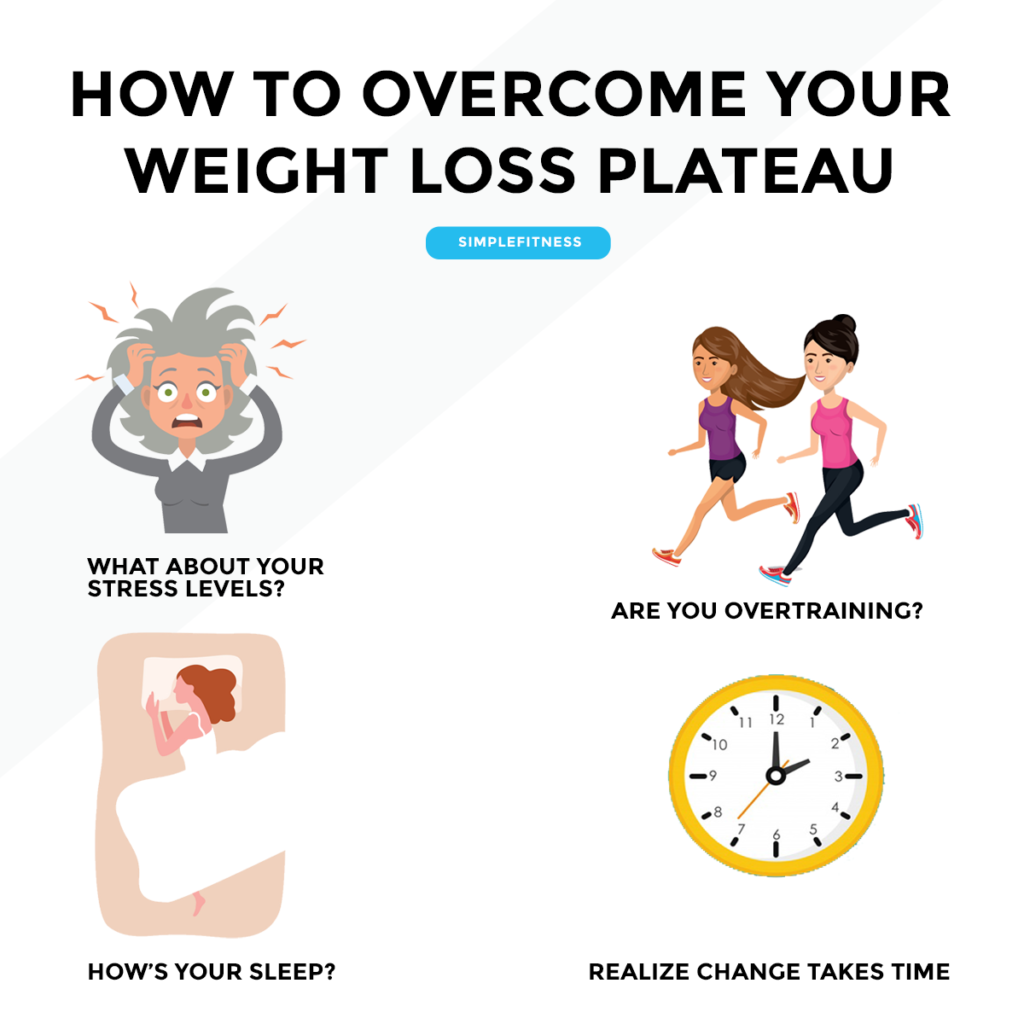
Conquering a weight loss plateau is a journey of self-discovery, requiring patience, consistency, and a willingness to adjust your approach. MyFitnessPal can be your trusted companion, providing valuable data and support along the way. Remember, plateaus are temporary, and with the right mindset and strategies, you can break through them and achieve your weight loss goals.
Keep in mind that everyone’s journey is unique, so don’t be afraid to experiment and find what works best for you. Stay motivated, stay consistent, and celebrate every small victory along the way!

